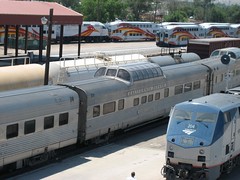I knew Big Toe had some historic interest in bike racing, so I asked him this morning if he wanted to go over with us to Mom and Dad’s to watch the prologue of Le Tour. He said “No,” in a way that puzzled me.
When we got home, I found him out in the garage, working on my old green bike. He’d heard me say something about wanting to flip the back hub, and he’d done it for me. He seemed sad, and I asked him why.
It seems that back in 1998, he’d been working as one of the Festina team’s bike mechanics. He was in the car with Willy Voet when he was stopped in Neuville-en-Ferrain with the dope in his car. That was the year the Tour fell apart amid its first genuinely public doping scandal, but I never knew about Big Toe’s involvement. The bastard Virenque did his penance and was allowed to return to cycling, but Big Toe was banned from the sport for life.
I’ve never seen Big Toe this way. it looked like he had a tear in his eye as he cranked down the nut on my bike’s rear axle. Perhaps best not to bring up the Tour around him for the next few weeks.


